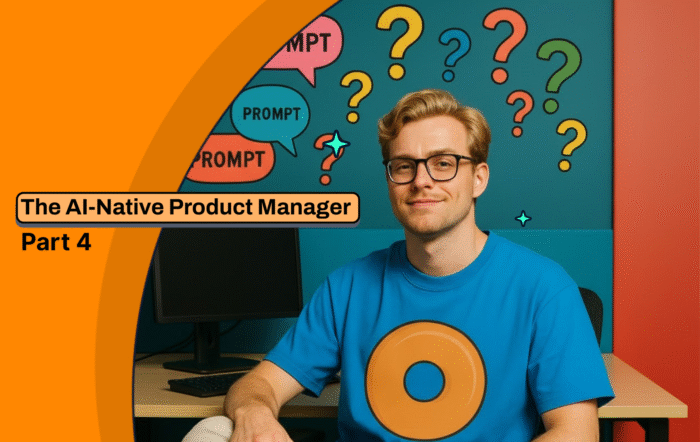Staying ahead of product feedback trends isn’t just about staying competitive. It’s about building the right features at the right time, with the right insights. The teams that miss the signals hidden in customer conversations, tickets, and sales notes are the ones building in the dark. And they’re the ones falling behind.
Product feedback today is messy, fragmented, and overwhelming. Yet it holds the clearest signals about what your customers need next and what will drive your revenue forward. That’s where Bagel AI’s platform overview comes in: turning scattered noise into strategic clarity and helping product leaders move from guesswork to growth.
1. The Shift to Real-Time, Actionable Feedback
Customer expectations have changed. Surveys that arrive weeks after a support issue are out. Teams now rely on real-time feedback captured as the customer interacts with your product or GTM teams.
- In-the-moment insights from support tickets, sales calls, and product usage patterns offer context you can’t replicate later.
- Bagel AI pulls from every source such as Salesforce, Zendesk, Gong, and Jira, and gives product teams a live stream of feedback, ranked by urgency and business impact.
- Actionable alerts when revenue is at risk or product friction appears help you fix problems before churn happens.
Action Item: Audit your current feedback sources and identify where real-time insights are missing. Explore integrations that bring GTM and product data into a single view.
Deep Dive: Many teams still rely on quarterly feedback reviews. By the time those insights surface, it’s too late to change course. Real-time tools like Bagel mean PMs no longer wait for the next roadmap meeting they can take informed action immediately.
2. Surfacing Hidden Signals with AI
Most of the feedback your product team needs is buried in unstructured formats: call transcripts, support tickets, Slack threads. Manual tagging and categorizing? That doesn’t scale.
- Natural language processing in Bagel AI finds what others miss, including offhand remarks about bugs, feature workarounds, or frustrations that never make it to a formal ticket.
- Pattern recognition across accounts reveals systemic issues early.
- Sentiment analysis goes deeper than NPS, interpreting urgency and emotion so you know what to tackle first.
Action Item: Inventory the top 3 sources of unstructured feedback your teams receive. Ask: Is this data being analyzed today? If not, consider AI-driven solutions to make it actionable.
Pro Tip: Run an internal test. Select a random sample of five recent support calls and read the transcripts. What signals did your team miss? Now run those same transcripts through Bagel and compare the insights. It’s not just faster, it’s smarter.
If you’re comparing platforms, see how Bagel stacks up as a Productboard alternative for teams who need to connect feedback to revenue, not just manage a roadmap.
3. Connecting Feedback to Revenue Impact
Not every complaint or feature request is equally valuable. Bagel helps product teams align their roadmap with actual business impact.
- Revenue-weighted prioritization helps focus on fixes and features that unlock deals or reduce churn.
- Customer-level context ties feedback to specific accounts, opportunities, and ARR.
- No more building based on volume or the loudest voice. Product managers can make decisions based on revenue risk and opportunity.
Action Item: Map your top 10 open feature requests to revenue impact. Are you building what your highest-value customers need?
Deeper Insight: Too often, prioritization is based on internal intuition or number of upvotes. Bagel flips the model: it tells you which features drive expansion, unlock deals, and keep enterprise customers engaged. You’re not just building for popularity, but for profit.
4. Closing the Feedback Loop Automatically
Collecting feedback isn’t the end. If it doesn’t get used, it’s noise.
- Feedback visibility in GTM tools means teams know when their insights led to action.
- Bagel automatically distributes updates across tools like Salesforce and Slack when a product gap is addressed.
- This closes the loop for CSMs and reps, driving trust and tighter alignment.
Action Item: Review how your team tracks feedback through to resolution. Are contributors notified when their insights lead to action?
Why It Matters: Closing the loop turns feedback from a black hole into a trust builder. GTM teams feel heard. Customers feel seen. And product teams feel supported. It’s a virtuous cycle that accelerates momentum.
5. Loyalty Signals Hide in Both Praise and Complaints
Your most vocal critics may be your most loyal customers. They care enough to push you to improve.
- Negative feedback isn’t a threat, it’s an opportunity to retain and grow.
- Bagel detects patterns in complaints that indicate loyalty intent, surfacing users worth saving.
- Identify advocates and detractors early, not after they churn.
Action Item: Analyze last quarter’s churned customers. What did their feedback look like? Could AI have flagged them earlier?
Key Insight: Silence isn’t golden, it’s dangerous. Complaints show engagement. When customers stop speaking up, that’s when you should worry. With Bagel, you catch those signals before the silence sets in.
Real-World Example
A fast-growing SaaS platform used Bagel to monitor Zendesk tickets and Gong calls. Bagel identified a recurring frustration tied to a misunderstood billing feature. This feedback was linked to $400K in expansion opportunities at risk. Within days, the product team clarified the feature, customer satisfaction rebounded, and deals progressed.
Another fintech team used Bagel to detect a feature frequently mentioned in closed-lost notes. The AI grouped these mentions, quantified the lost opportunity as $2.1M, and recommended prioritization. The team shipped a fix within a sprint. Revenue impact? Two deals closed in 10 days.
Curious how Bagel compares to other AI-native feedback tools? Explore our Enterpret alternative comparison to see how Bagel delivers deeper insights tied directly to business outcomes.
Take Action Now
- Integrate your feedback sources into one intelligent stream with AI assistance.
- Prioritize by business impact, not guesswork.
- Surface trends automatically instead of waiting for retros.
- Give your team tools that work where they already work.
- Use real examples to validate strategy and build GTM trust.



